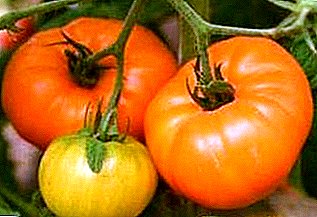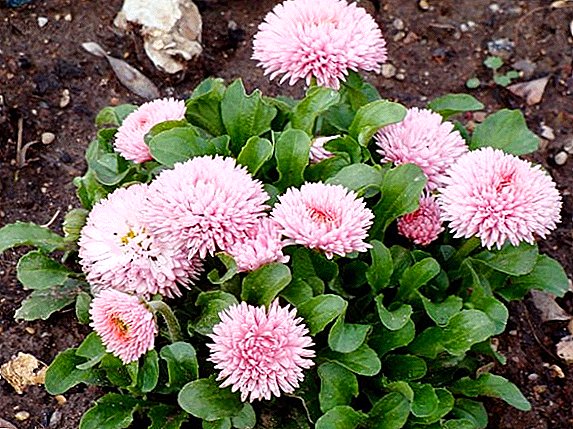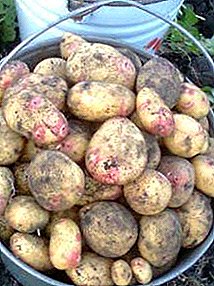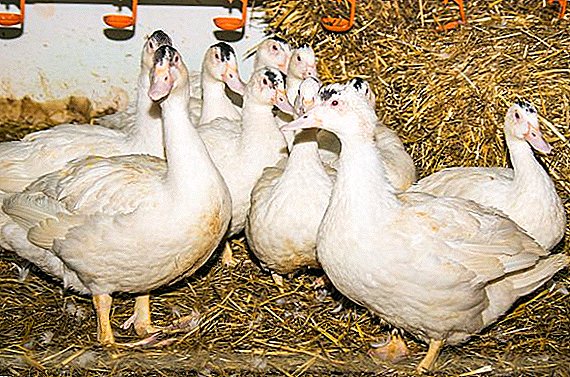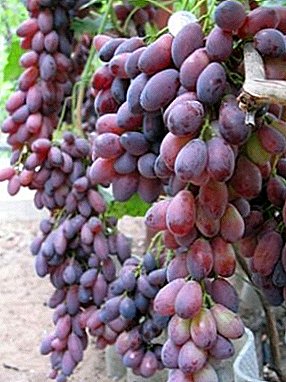
The variety “Asya” is unpretentious and relatively unpretentious - but you will notice even the facades entwined with vines and hung with magnificent clusters of facades.
Still this grade beautifully transportedYes, and with the storage of difficulties will not arise.
Nevertheless, it is not in the first place in popularity, although it is also good in a blend of red wines. Why?
What kind is it?
 Grapes "Asya" - table variety, the term of ripening berries is medium-early. Table varieties also include Lily of the Valley and Alexander.
Grapes "Asya" - table variety, the term of ripening berries is medium-early. Table varieties also include Lily of the Valley and Alexander.
Harvest can be collected in late August - early September.
Very beautiful variety, picturesquely wraps around facades and fences, it is used mainly in juice products and desserts, liqueurs, red wines.
In its natural form, a person likes a berry less - because of a fairly ordinary taste.
Farmers love variety for beautiful appearance and high resistance to storage and transport for fairly long distances. The same qualities are different Chameleon and Sponsor varieties.
Description of the grape variety Asya
Power of growth bush large, reminiscent of the power of Citron Magaracha and Alpha.
Bunches cone-cylindrical, elongated, large-sized (average weight 700 g, but can reach a kilogram), loose, not peas. Can reach up to forty centimeters in length.
Flower functionally female, just like King Ruby and Miner.
Berry purple with a red shade, egg-shaped, weighing about 14 g.
Skin dense, medium thickness, does not crack, when food is almost not noticeable.
Pulp crispy, juicy, very sweet, with two or three full seeds inside. Sheet rich green, five-lobed, medium dissected.
Feet of bunches thin, fragile. Vine light brown, flexible, strong. Annual matured shoots are brown, with dark brick knots.
In more detail and clearly with the grapes "Asya" can be found in the photo below:



Breeding history
This “Turgenev girl” is the fruit of a breeder’s labor V.V. Zagorulko.
Obtained by crossing varieties Demeter and Dunav.
Homeland of this variety - Kuban, as well as time-tested eponymous grape variety Kuban.
It grows wherever it is warm, mild climate, there are no severe winters - Ukraine, the southern regions of Russia, the Crimea, the Black Sea coast of the Caucasus.
Specifications
 Sort moderately resistant to cold (up to -20-21 degrees).
Sort moderately resistant to cold (up to -20-21 degrees).
Good sugar level - up to 20%. Acidity 4-5 g / cu. dm.
Almost not afraid of wasp attacks, which cannot be said about birds and fungal diseases.
Especially carefully should approach the issue of protection against gray rot.
Because of female flowers it is well pollinated only in the presence of a number of varieties with hermaphroditic flowers.
Taste pleasant, but quite simple, therefore, is not the main brand in the manufacture of wine.
The yield is high, as in Arcadia or Anthony the Great, which is why, in order to maintain stable and high-quality fruiting, it is necessary to thin out the bush from the stepsons and excess shoots.
Requires mandatory shelter for the winter months, as well as the Kinglet and Aladdin, and caution when working with a bunch of fragile combs.
Very susceptible to additional care in the form of pollination and watering. Afraid of spring frosts.
Diseases and pests
According to farmers, this variety is resistant to wasps, but there are exceptions. Therefore, it is necessary to take action against them.
 When packing bunches in special mesh bags, you should be very cautious - Asi has thin and fragile combes.
When packing bunches in special mesh bags, you should be very cautious - Asi has thin and fragile combes.
It is possible not to mess around with barriers at all, but to place poisonous baits and use insecticides, and burn the found nests of striped aggressors to restore order from pests and there is someone to them.
It's easier with birds - reticulated hardened barriers simply won't let them go to the berries.
Fungicides are applied against it, which effectively fight against powdery mildews - rovral, captan, methylmethyram, folpet, deozal, cercobin, benomyl.
As prophylaxis it is necessary to produce cleaning the area around the bunch from the leaves, thus providing good access to the sun's rays and wind to the fruits. You can get acquainted with other types of diseases of grapes in separate materials on anthracnose, chlorosis, bacteriosis and other diseases.
If you decide to plant this variety in your plot, it will please you with a regular and abundant harvest.
Only need show zeal in defense This delicate fruit from rot and birds, cover it for the winter and protect it from spring frosts.
Yes, this “simple” will not spoil you with exquisite taste, but juices, compotes and desserts will not run over the table, and for good wine “Ace” you just need to pick up more noble “neighbors”, for example, plant Julian or Alpha.




